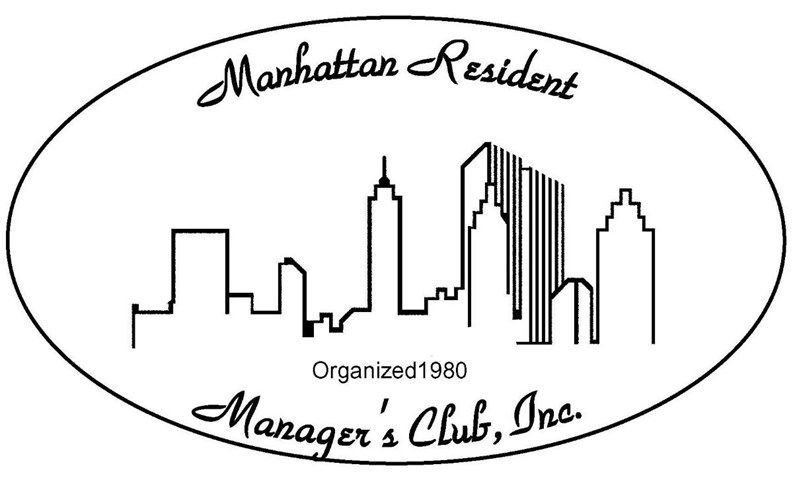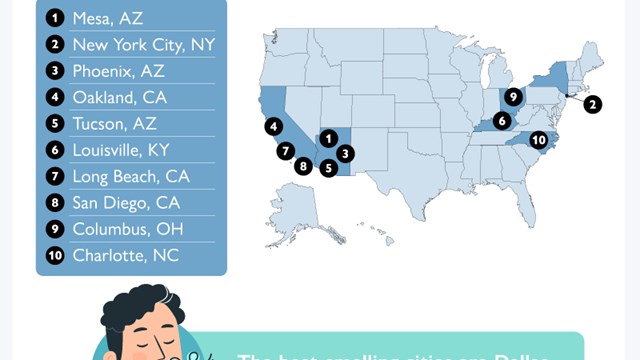There was a time when many of the city’s key resident management/superintendent associations didn’t communicate much. The Manhattan Resident Managers Club, Inc., the Metropolitan Building Managers of New York, the Scandinavian-American Building Managers Guild, the Superintendents Technical Association (STA), the New York Building Manager’s Association, and the Hibernia Provident Society got together about as often as Donald Trump and Billy Crystal sit in bleacher seats at Yankee Stadium, even though they share many of the same members.
But today, that’s changing. For the past six months—and for the first time that anybody can remember—all of these groups, at the executive level, have been talking shop with each other. They’re discussing things like professional certification, recruitment, and ideas about working together. They’re interested in solving problems and sharing information, and they’re working out the details over classic New York City slices at John’s Pizzeria at 64th Street and First Avenue on Manhattan’s Upper East Side. Thanks in part to the efforts of Maria Vizzi of Indoor Environmental Solutions—a clean-air environmental company based in the Bronx—who was initially instrumental in organizing the informal conference, a new era of openness and cooperation between historically separate groups may be on the horizon.
A Long Overdue Meeting
The leaders of each group met informally in June, according to Vizzi, and are very interested in keeping the dialogue going. Another industry influence is Ed Morse, from the Hess Corporation. His interest in fostering good communication is one reason why he is receiving Associate Member of the Year award at the New York Association of Realty Managers (NYARM’s) upcoming Dinner Dance Gala on January 27th.
Speaking for the Manhattan Resident Managers Club, Inc., group president Mike MacGowan remarked that the confab was long overdue. McGowan is also being honored by NYARM—because of a strong emphasis on education—he is the group’s 2007 Resident Manager of the Year. The club, which was founded in 1980 and incorporated a year later, has 225 members who are resident managers and supers; 12 members who are managing agents, and 110 associate members who are contractors and vendors.
Al Suarez, president of the Scandinavian-American Building Managers Guild, also sees a strong need for the city’s building management and superintendent groups to work together. The guild, which was founded in 1934, and is one of the oldest clubs still in existence, has 130 members and is still growing, according to Suarez.
Many Perspectives, Many Solutions
Suarez also believes that with this new spirit of communication, good things are developing. “Just the meeting between the heads of our clubs is a positive step,” he says. “There was a time when members only stuck to one club, never really branching out and seeing what the other clubs had to offer.”
And the benefit for the superintendents, resident managers and vendors, Suarez says, is “just knowing that we’re all in this together and doing what we can to keep this industry strong. Everyone has their own way of solving problems, but it always helps to get a different point of view from someone who may have gone through the same situation before. That shared communication gives us a chance to see what the other clubs have to offer. One club may focus more on education, another on employment. Every organization has its own identity, but in the end we’re all here to work together.”
Guglielmo Ammatuna, president of the Metropolitan Building Managers of New York adds that more open communication will improve member recruitment for each organization by developing better marketing tools and strategies. “The only members I can recruit are resident managers or superintendents. We bring our information around on what we offer as a group, like life insurance, with coverage for wives and kids. We hope the new future group presidents will keep it the same. In my club, the president’s term is up after two years. Hopefully, another person steps in and stays on the same path that we’re trying to put together.”
In addition to creative problem solving solutions and benefits for members, Peter Grech, the outgoing president of the STA, says that open communication and solidarity between groups confers another big perk to participants: “Clout. Standing alone, one club is only one club,” Grech says. “Standing together on certain issues it brings us more clout—and we need it.”
Grech, the new vice president and director of educational services, has been replaced on the board by new president Roberto Cardona. The STA, which was founded in 1998 by Dick Koral, has about 300 members and 24 vendor members spread out among three chapters: the Bronx, Brooklyn and Manhattan.
More to Come
Hibernia Provident Society’s president Desmond Beglin says that meeting with the other presidents and group representatives was a positive step and he believes that it will promote open discussions about their individual clubs. HPS, a non-profit organization open to resident managers, supers, and professional employees in the real estate industry and established in May 2005, has about 100 members. “I enjoyed seeing everyone agree to meet again later this year. The discussion really didn’t allow for politics, since each president was just there to speak openly,” Beglin says.
Beglin also sees great potential in “utilizing knowledge to benefit the members—specifically where vendors can be recommended based on their performance within our buildings.”
For his part, Grech agrees with MacGowan’s feeling that the presidents’ meeting was long overdue. “Moving forward, I have great expectations. I expect that if we bring all the clubs together on certain issues in the spirit of cooperation, we can really get things done.”
Grech adds that, “Each club has its own flavor—characteristics that draw in certain people who join one group and not another. If someone outgrows our club, we can recommend going to another club. There’s a spirit of cooperation, sharing information on people who are good members.”
According to Vizzi, it should be noted here that these organizations are not all business. Many host golf outings, barbecues and social events throughout the year to cultivate group enthusiasm and camaraderie.
“Fringe benefits like those help the well-being and vitality of any association,” says Vizzi, who adds that the New York Building Managers Association holds their black tie Grand Ball every year at The Marriott Marquis. This year’s highly anticipated event will be held on Saturday, April 14, 2007.
Another event to socialize among the memberships of the various building services organizations is the Three Hands Grand Ball to be held on March 3, 2007 at the New York Hilton. “The Three Hands Club was formed 14 years ago by the combined efforts of the Manhattan Resident Managers Club, Inc., the Metropolitan Building Managers of New York, and the Scandinavian-American Building Managers Guild,” says Vizzi.
Standing Together, Moving Forward
In discussing the recent warming of relations between the city’s various building maintenance and management associations, Grech refers to a recently published book called Bowling Alone. “It’s about all the civic and fraternal organizations that are disappearing,” says Grech, “or whose numbers are decreasing because their members are dying off and not being replaced. Our business is one that runs contrary to what that book said. All organizations are facing decreased membership—but we’re growing.”
“To grow, you need to move forward,” Grech continues. “You can’t stand alone. We’re not merging together, but we’re cooperating, and together we’re all moving forward. Who knows? Maybe collectively we can do things that individually we couldn’t. We can certainly pull resources together and have a joint marketing project.”
Roach says he feels that he and Grech are on the same page. “In our club, we welcome all ranks—the doormen, the concierge, and handymen. And virtually all of them are hitting the STA website (www.nycsta.org) because they want to become informed about the life they’re building, and how they can get ahead. We’re big on education. Maybe with cooperation and communication from all the clubs we can do even more.” In fact, according to Grech, the website had one of its largest trafficked months recently with 187,439 hits alone in the month of November.
According to New York Building Managers Association president William Waldren, “The most important thing is open discussion.” He says that for his organization’s 300+ members, open, productive conversations today can greatly assist tomorrow’s certification and education efforts, which he feels are critical. The club was founded in 1917 and incorporated in 1923, and their membership ranks which includes resident managers and supers is growing tremendously, he says. “We push our guys to go to the union, to get classes.”
“You do the best you can; offer seminars at the right time. Obviously, you’re not going to do a seminar on air-conditioning in the middle of winter,” adds Peter Roach, president of the STA’s Manhattan chapter. “Our purpose is to be there when a new guy has a problem with a boiler or with the steam line. That’s what we’re all about—if we did get together and stand united, it could be tremendous!”
“The easiest part is getting together,” says Grech. “The hardest part is keeping the motivation and momentum alive, and moving in the right direction.”
Margie Russell, the executive director of the New York Association of Realty Managers, (NYARM), welcomes the new spirit of openness among the clubs. A frequent guest speaker and instructor, Russell offers presentations that provide an insight into the operation of a building beyond the mechanical side. “When the resident manager understands how the building staff’s actions and inactions can have a significant effect on the building’s financials, it can have an impact on how that RM manages the building and will most likely increase the overall value of the property,” she explains. Through vigilant recruitment efforts, the NYARM membership has grown to include resident managers and superintendents, in addition to the property managers, vendors, contractors and industry professionals who have traditionally been their core membership. “When the resident managers join with the property managers on a regular basis, their level of understanding the depths of the responsibility of those at the managing agent’s office can only translate into a smoother running building. Insight is key,” Russell says.
Gregg Laskoski is a freelance writer based in New York City.







Leave a Comment